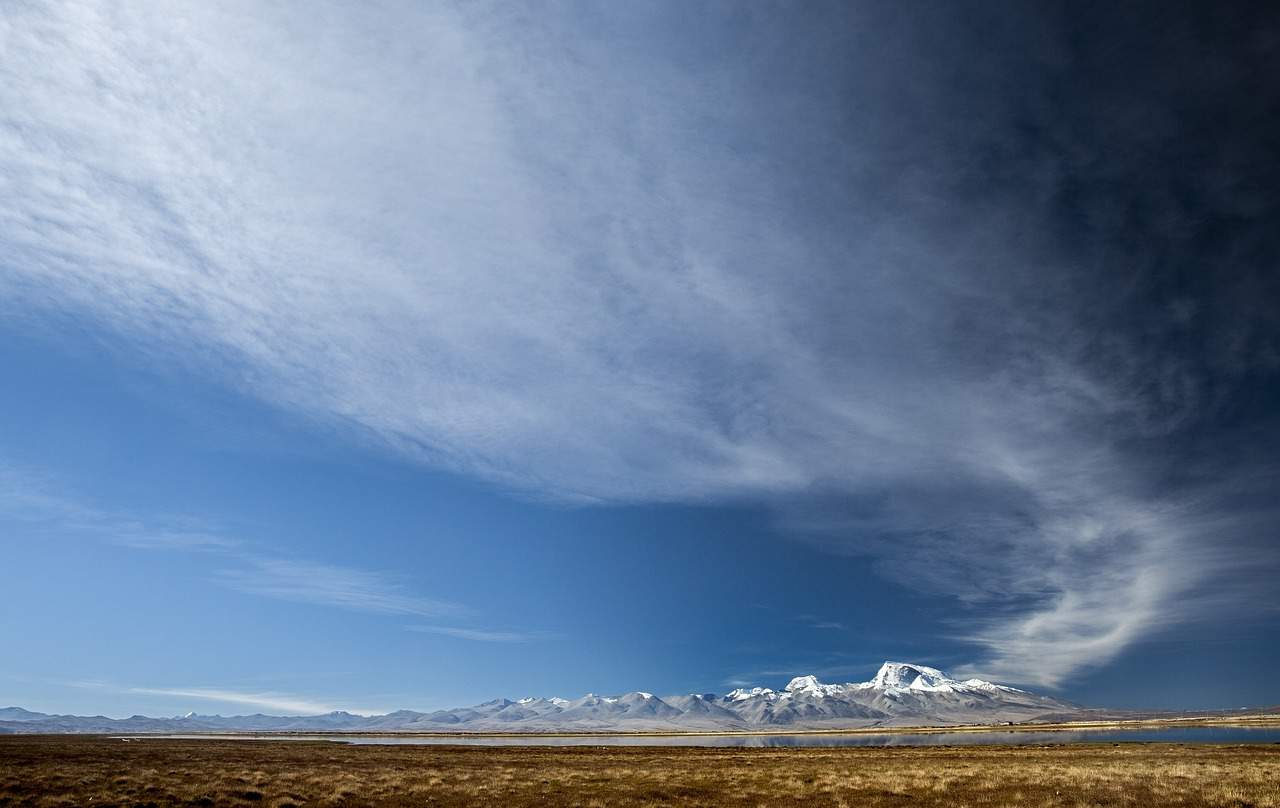Under current levels of atmospheric carbon dioxide 60% of alpine permafrost land area will be lost in the future.
Permafrost, or permanently frozen soil, contains 1,500 trillion grams of carbon worldwide, which is twice as much as the amount currently in the atmosphere. Alpine permafrost alone, which (unlike arctic permafrost) lies closer to the equator at high elevations such as at the Tibetan Plateau, contains 85 trillion grams of carbon.
Permafrost in these areas will likely melt faster in the face of climate change and when that happens large quantities of carbon dioxide and methane stored locked up in ice will be released, further driving climate change.
As a result, the climate on Earth will be similar to that in the mid-Pliocene warm period, between 3.3 million and 3 million years ago when the extent of permafrost was a lot less prominent than today, according to a team of scientists.
“Atmospheric carbon dioxide concentrations today are similar, or maybe even higher, than the mid-Pliocene because of the burning of fossil fuels, and so scientists point at that time period as an analog for our current and near-future climate,” explains Carmala Garzione, dean of the University of Arizona College of Science who was an author of a new study.
“We’re not feeling the full effects of the rise in atmospheric carbon dioxide yet because our Earth system takes time to adjust,” Garzione observes. “The Pliocene is an important period as an ancient analog for how Earth will adjust to the carbon dioxide that humans have already released to the atmosphere.”
The scientists examined finely grained carbonate minerals at the bottom of a lake on the Tibetan Plateau, which is more than 4.5km above sea level and has the largest alpine permafrost region on the planet, to estimate the range of temperatures during the Pliocene period from 5.3 million to 2.6 million years ago and the Pleistocene period from 2.6 million and 11,700 years ago.
Then the team created a computer model of what the climate was probably like during the Pliocene. What they have discovered is that “not only was the average temperature of much of the Tibetan Plateau above freezing in the Pliocene, but the same was true for many of the alpine regions across the globe,” they explain.
“Ultimately, the modeling suggests that under current levels of atmospheric carbon dioxide, 20% of arctic permafrost land area and 60% of alpine permafrost land area will be lost in the future. High altitude alpine regions are more sensitive than high latitude arctic regions to warming under higher atmospheric carbon dioxide conditions,” the scientists add.
In other words, alpine regions, which also include the Mongolian Plateau in Central Asia, the Rocky Mountains in North America and parts of the Andes in South America, will be especially vulnerable to warming temperatures in coming decades.
“There’s been a lot of focus on the stability of arctic permafrost, because it covers more land area and contains a huge reservoir of organic carbon trapped in permafrost, but we also need to be aware that alpine regions stand to lose more permafrost proportionally and are important in understanding of potential carbon release under global warming scenarios,” Garzione stresses.
This story first appeared on Sustainability Times
© 2022 Sustainability Times.
This article is licensed under a Creative Commons Attribution-ShareAlike 4.0 SA International License.












